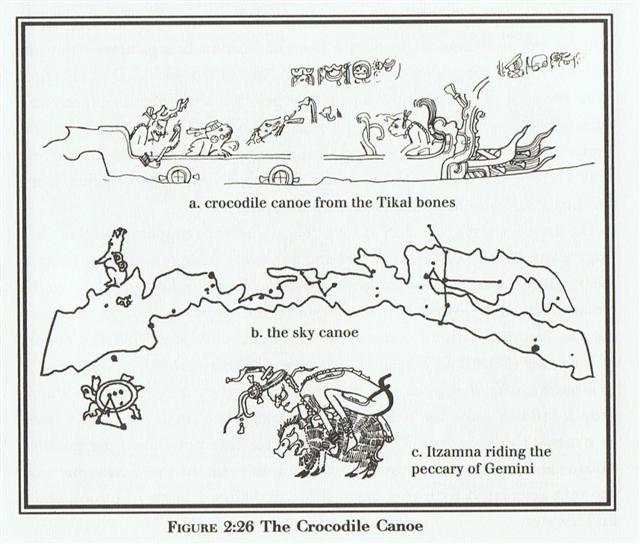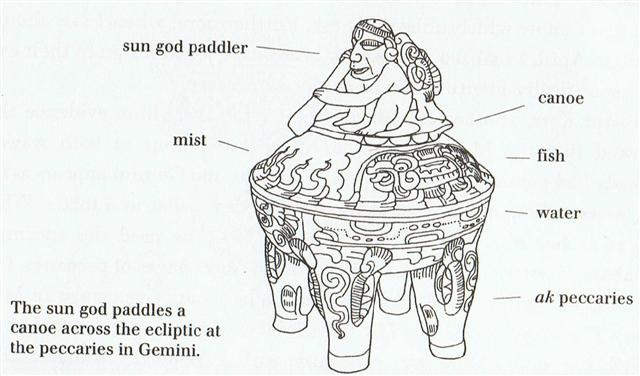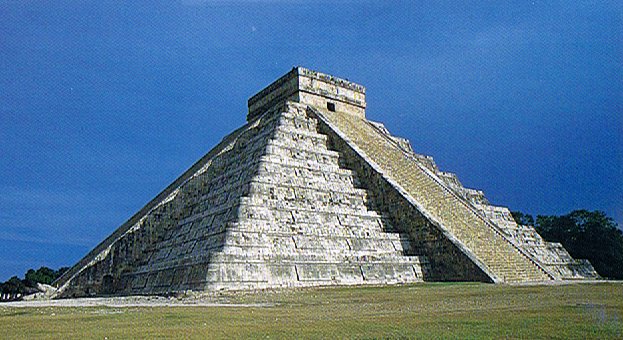The gestation period of the pig,
... Using an unworked
branch of the mapou tree - should we not thus
say, a bough broken from a sacred tree? - a second
priest, representing Tuu, removes, binds up,
and then reburies the first sweet-potato tubers. He
so kills Rongo, the god, parent and body of
the sweet potato, or else puts him to sleep, so that
man may harvest the crop to his own use
...
... They went ashore and took the
food [te kai] with them. They pulled the
canoe onto the beach and left it there.
Ira sat down [he noho]
with all the other (companions) and spoke to Makoi [ka
ki era kia Makoi]: 'You shall mark the land for
me and make it known (by its name)!'
After that, Ira spoke these words: 'This is the
diggning stick (? ko koko], Kuukuu. You shall work
the land for me and plant the yam roots [te uhi]!'
... [E:18]
... the Hawaiians had a
sweet-potato ritual of the same general structure as
the Maori cycle. It was used in the fields of
Kamapua'a, name of the pig-god said by some to
be a form of Lono, whose rooting in the earth
is a well-known symbol of virile action
...
was about 115 days, similar to the synodic cycle of
Mercury:
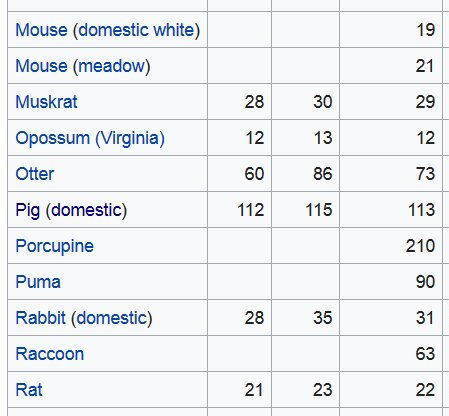
|
Synodic
cycles: |
|
Mercury |
115.88 |
|
Venus |
583.92 |
|
Earth |
364.0 = π * 115.88 |
|
... Another name for Mercury was
Hermes and Hermes Trismegisthos
(thrice-mighty) could have
referred to the fact that there were
3.14 * 115.88 = 364.0 days for the
cycle of the Earth around the Sun.
Although the calendar has 365 days
for a year this is due to the fact
that the Earth has to turn around an
extra day in order to compensate for
how the direction to the Sun changes
during a year ... |
|
Mars |
779.96 |
|
Jupiter |
398.88 = 115.88 +
283.00 |
|
Saturn |
378.09 |
|
Uranus |
369.66 |
... The Explorers had left their old homeland in
"April 25 (115) - implying the synodic cycle of Mercury -
and they had returned half a year later, in "October
25 (298 = 115 + 183), which was 10 days after the arrival of the
Royal Double Canoe
...
Mercury (→ quicksilver)
was always close to the horizon and hard to observe,

... Mercury was used in the
process of curing pelts for hats, making it
impossible for hatters to avoid inhaling the mercury
fumes given off during the hat making process;
hatters and mill workers thus often suffered mercury
poisoning, causing neurological damage, including
confused speech and distorted vision
...
only visible at the
time in the year when the
Sun was moving quickly (at an equinox):
... Ganz ähnlich is der Name 'Gott von Duazag'
des Gottes Nabū ... zu erklären.
Er bezeichnet ihn als den Gott
des Wachtstums, welches als aus dem Osten stammend
betrachtet wird, weil die Sonne, die das Wachstum
bringt, im Osten aufgeht. Dass aber Nabū
als Ost-Gott aufgefasst wurde, hängt damit zusammen,
dass sein Stern, der Mercur, nur im Osten oder
Westen sichtbar ist
...

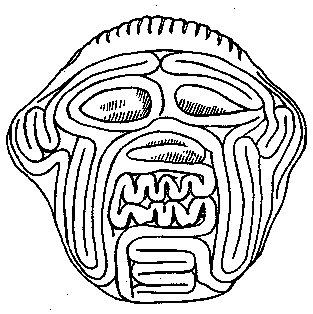
In South America the pig was a peccary, and
evidently he was located at Gemini (suggesting the ancient
epoch when Gemini rose heliacally at the northern
spring equinox):
But the Chinese had their Pig at Markab Pegasi.
... The Chinese had their 13th
station at Markab Pegasi (*349.5) and their 14th at
Algenib Pegasi (*1.8), which means Sirrah (*0.5) was
inside the Pegasus Square ...
|
10 |
Girl |
ε
Aquarii (Albali) |
Bat |
Jan
29 (394) |
 |
|
11 |
Emptiness |
β
Aquarii (Sadalsud) |
Rat |
Febr
9 (405) |

...
In China, with Capricornus, Pisces, and
a part of Sagittarius, it [Aquarius]
constituted the early Serpent, or
Turtle, Tien Yuen; and later was
known as Hiuen Ying, the Dark
Warrior and Hero, or Darkly Flourishing
One, the Hiuen Wu, or Hiuen
Heaou, of the Han dynasty, which
Dupuis gave as Hiven Mao. It was
a symbol of the emperor Tchoun Hin,
in whose reign was a great deluge; but
after the Jesuits came in it became
Paou Ping, the Precious Vase. It
contained three of the sieu, and headed
the list of zodiac signs as the Rat,
which in the far East was the ideograph
for 'water', and still so remains in the
almanacs of Central Asia, Cochin China,
and Japan ...
 |
|
12 |
Rooftop |
α
Aquarii (Sadalmelik) |
Swallow |
Febr 18 (414) →
Bharani |
|
... Now birds and
fishes are born under the sign of the
Yin [Moon], but they belong to the
Yang [Sun]. This is why birds and
fishes both lay eggs. Fishes swim in the
waters, birds fly among the clouds. But
in winter, the swallows and starlings go
down into the sea and change into
mussels ... |
|
13 |
House |
α
Pegasi (Markab) |
Pig |
March
5 (414 + 15 = 365 + 64) |
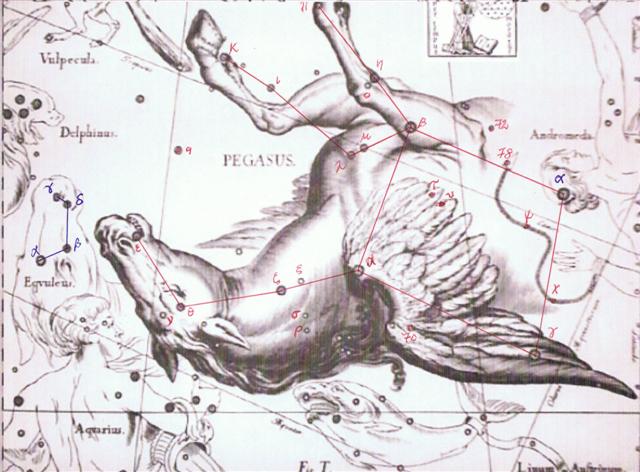 |
We could say that the stars at day 14 * 29½ = 413
(February 17) would return to visibility 16 days
later when (at the time of rongorongo) the Sun would
reach this Pig star, viz. in day 64 (= 1 day + 9
weeks) of the new year. Counted from the solstice in
December 21 (355) this was day 74 (= 365 / 5 + 1).
At the time of the Bull Terminalia had been
positioned when
the Full Moon was at Toliman (and the Sun therefore
had been at the head of Cetus) - which surely ought to
indicate that the reversed manu rere in the G
text here was referring to the time of the Bull.
|
36 he apuka heu |
37 he tuitui koviro |
38 he rai atea |
|
Tui.
1. To sew mats, to make strings.
E-tahi tuitui reipá i Te Pei, ekó rava'a
e-varu kaukau; i-garo ai i Hiva,
i te kaiga, a necklace of
mother-of-pearl is on te Pei, few
will find it (lit: eight groups of
people); it has remained in Hiva,
in our homeland. 2. The three stars of
Orion's Belt. Vanaga. Mq.: tuitui,
be still! Mq.: tuitui kioé,
chain. |
|
FEBR
21 (417) |
22
(53) |
TERMINALIA |
 |
 |
 |
|
Gb8-3 (229 + 215 = 444) |
Gb8-4 |
Gb8-5 (217) |
|
σ Ceti (36.9) |
ν Ceti (37.9) |
ν Arietis (38.5), δ, ε Ceti (38.8) |
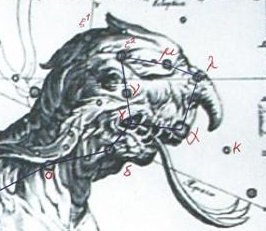 |
|
April
26 (*36) |
27 |
28
(118 = 4 * 29½) |
|
°April 22 (*32) |
23 |
24 (*399 = 479 - 80) |
|
'March 30 (454 = 365 + 89) |
31 |
'April 1 (91) |
|
"March 16 (*360 = *36 - *41) |
Tara-hao 17 |
18 (77 = 91 - 14) |
|
CLOSE
TO THE FULL MOON: |
|
AUG
23 |
24
(236 = 53 + 183) |
25 (*157) |
|
σ
Lupi (219.1),
ρ
Bootis (219.5),
HARIS (Keeper) = γ Bootis (219.7) |
σ Bootis (220.2), η Centauri (220.4)
*179.0 = *220.4 - *41.4 |
ρ Lupi (221.0),
TOLIMAN
= α Centauri
(221.2), π Bootis (221.8), ζ Bootis
(221.9) |
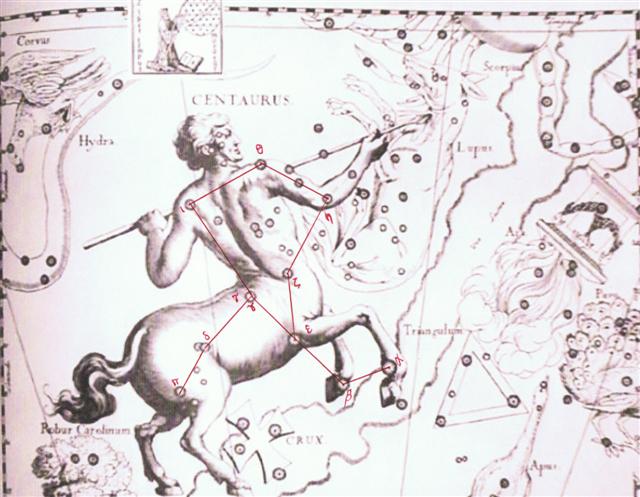 |
|
Oct
26 |
27
(300) |
28
(118 + 183) |
|
°Oct 22 (295) |
23 (*216) |
24 |
|
"Sept
29 (*192) |
30 (3
* 91) |
'Oct
1 |
|
Hora
nui 15 (*178) |
"Sept
16 (236 + 23) |
17
(260) |
 |
 |
 |
 |
|
normal |
reversed |
normal |
reversed |
At the time of the Bull the Chinese Pig star (Markab Pegasi) would have risen
heliacally 64 right ascension earlier than in
March 5 (429 = 400 + 29), viz. in day 429 - 64 = 365.
Around
the time of the Bull (as archeological remains
from Stonehenge has shown)
the
feasts at the winter solstices involved eating
plenty of pigs - and this is still current today on many
Christmas
tables where we can find the head of a pig with a
red apple in his mouth (→ vaha mea),
illustrating the return of sun light.
|
 |
|
vaha mea |
Let's count: 217 (Gb8-5) - 64 = 153 (Gb5-29).
Here (at Lepus, the Hare) both head and feet are missing:
|
APRIL 1 (364 / 4 = 91) |
2 |
3 |
4 |
 |
 |
 |
 |
|
Gb5-23 |
Gb5-24 (148) |
Gb5-25
(378 = 364 + 14) |
Gb5-26 |
|
... The ordinary
year in the previous Roman calendar
consisted of 12 months, for a total
of 355 days. In addition, a 27-day
intercalary month, the Mensis
Intercalaris, was sometimes
inserted between February and March.
This intercalary month was formed by
inserting 22 days after the first 23
or 24 days of February; the last
five days of February, which counted
down toward the start of March,
became the last five days of
Intercalaris. The net effect was to
add 22 or 23 days to the year,
forming an intercalary year of 377
or 378 days ... |
|
|
|
HAEDUS II = η Aurigae
(75.9) |
5h (76.1)
ε
Leporis (76.0),
CURSA
(Foot-stool) =
β
Eridani
(76.4),
λ
Eridani (76.7)
*35.0 = *76.4 - *41.4 |
μ Aurigae, μ Leporis
(77.6)
*35.0 + *1.0 = *37.0 - *1.0 |
ĸ Leporis (78.0),
RIGEL
(Foot) =
β
Orionis
(78.1),
Flaming Star = IC405
(78.2),
CAPELLA
=
α
Aurigae
(78.4),
ο
Columbae,
τ
Orionis (78.8)
*37.0 = *78.4 - *41.4
THUBAN (α Draconis) |
|
Egyptian water ripples |
 |
Phoenician
mēm |
 |
Greek
mu |
Μ
(μ) |
... Behind me, towering almost 100 feet into the air, was a perfect ziggurat, the Temple of Kukulkan. Its four stairways had 91 steps each. Taken together with the top platform, which counted as a further step, the total was 365. This gave the number of complete days in a solar year. In addition, the geometric design and orientation of the ancient structure had been calibrated with Swiss-watch precision to achieve an objective as dramatic as it was esoteric: on the spring and autumn equinoxes, regular as clockwork, triangular patterns of light and shadow combined to create the illusion of a giant serpent undulating on the northern staircase ...
|
|
|
... In view of the almost universal
prevalence of the Pleiades year
throughout the Polynesian area it is
surprising to find that in the South
Island and certain parts of the
North Island of New Zealand and in
the neighboring Chatham Islands, the
year began with the new Moon after
the yearly morning rising, not of
the Pleiades, but of the star Rigel
in Orion ...
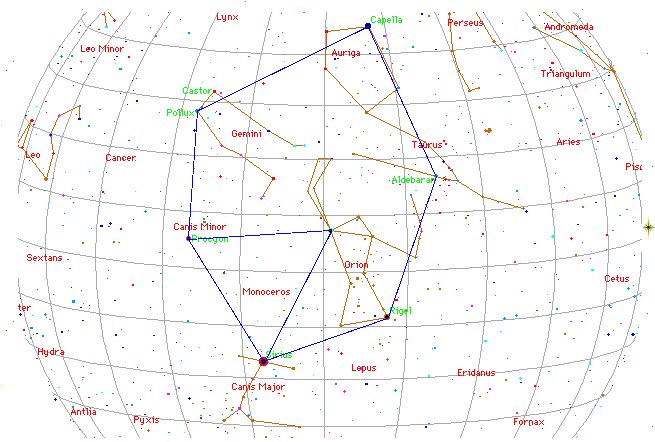 |
|
June
4 (155 = 91 + 64) |
5 (2 * 78) |
6 (314 / 2) |
7 (94 + 64) |
|
°May 31 |
°June 1 (152 = 8 * 19) |
2 (*73) |
3 (94 + 60) |
|
'May 8 (128 = 2 * 64) |
9 |
10 (260 / 2) |
11 (94 +
37) |
|
"April 24 |
25
(115 = 152 - 37) |
26 (4 * 29) |
27 (94 + 23) |
|
APRIL 5 (4 * 115) |
6 (365 + 96 = 461) |
7 (81 + 16 = 97) |
 |
 |
 |
|
Gb5-27 (229 + 151 = 380) |
Gb5-28 |
Gb5-29 |
|
λ Aurigae (79.0), λ Leporis (79.6),
ρ Aurigae (79.7)
ARCTURUS
(α Bootis)
|
Shur-narkabti-sha-iltanu-5 (Star in
the Bull towards the north)
σ
Aurigae (80.4),
BELLATRIX (Female Warrior)
=
γ
Orionis,
SAIF AL JABBAR (Sword of the Giant)
=
η
Orionis
(80.7),
ELNATH
(The Butting One)
=
β
Tauri = γ Aurigae
(80.9) |
ψ
Orionis (81.1),
NIHAL (Thirst-slaking Camels)
=
β
Leporis
(81.7) |
|
June 8 (*444) |
9 (525) |
10 (161 = 97 + 64) |
|
... The month, which takes its name
from Juppiter the oak-god, begins on
June 10th and ends of July 7th.
Midway comes St. John's Day, June
24th, the day on which the oak-king
was sacrificially burned alive. The
Celtic year was divided into two
halves with the second half
beginning in July, apparently after
a seven-day wake, or funeral feast,
in the oak-king's honour ... |
|
°June 4
(*440) |
5 (521) |
6 (157) |
|
'May 12 (*52) |
13 (133) |
14 |
|
"April 28 (118 = 4 * 29) |
Vaitu Nui
29 (*39) |
30 |
 |
|
APRIL 8 |
9 (99) |
10 (465 = 365 + 100) |
11 (*21) |
 |
 |
 |
 |
|
Gb6-1 (383) |
Gb6-2 |
Gb6-3 |
Gb6-4 (157) |
|
KHUFU
MINTAKA
(Belt) = δ Orionis,
υ Orionis (82.4), χ Aurigae
(82.5), ε Columbae (82.6)
*41.0 = *82.4 - *41.4 |
KHAFRE
Al Hak'ah-3 (Brand) /
Mrigashīrsha-5 (Stag's Head) /
Turtle Head-20 (Monkey) /
Mas-tab-ba-tur-tur (Little
Twins)
ARNEB
=
α
Leporis, Crab Nebula = M1 Tauri
(83.0,
φ¹
Orionis (83.1),
HEKA
=
λ
Orionis, Orion Nebula = M42
(83.2),
φ²
Orionis (83.6),
ALNILAM
(String of Pearls) =
ε
Orionis
(83.7) |
MENKAURE
Three Stars-21 (Gibbon) /
Shur-narkabti-sha-shūtū-6 (Star
in the Bull towards the south)
/
ANA-IVA-9 (Pillar of exit)
HEAVENLY GATE
=
ζ
Tauri,
ν
Columbae (84.0),
ω
Orionis (84.2),
ALNITAK
(Girdle) =
ζ
Orionis,
PHAKT
(Phaet) =
α
Columbae
(84.7) |
ο Aurigae (85.8), γ Leporis
(85.9)
YANG MUN (α Lupi) |
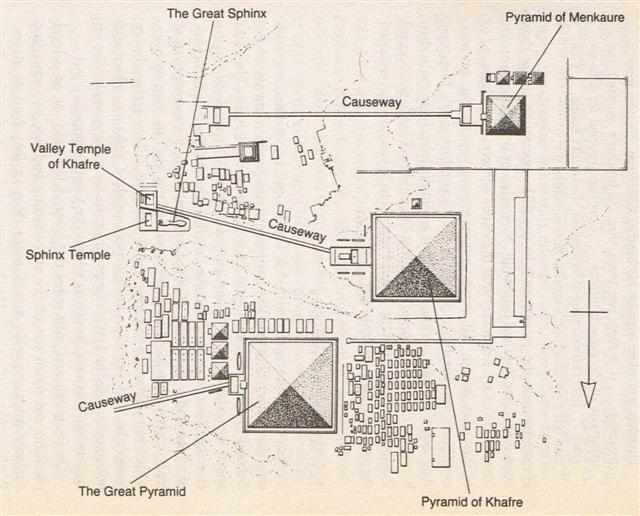
...
Menkaure was allegedly a
much more benevolent Pharaoh
than his predecessors. According
to legends related by Herodotus,
he wrote the following: This
Prince (Mycerinus)
disapproved of the conduct of
his father, reopened the temples
and allowed the people, who were
ground down to the lowest point
of misery, to return to their
occupations and to resume the
practice of sacrifice. His
justice in the decision of
causes was beyond that of all
the former kings. The Egyptians
praise him in this respect more
highly than any other monarchs,
declaring that he not only gave
his judgements with fairness,
but also, when anyone was
dissatisfied with his sentence,
made compensation to him out of
his own purse and thus pacified
his anger.
The Gods
however ordained that Egypt
should suffer tyrannical rulers
for a hundred and fifty [150]
years according to this legend.
Herodotus goes on: ... An oracle
reached him from the town of
Buto, which said 'six years
only shalt thou live upon this
earth, and in the seventh thou
shalt end thy days'.
Mycerinus, indignant, sent
an angry message to the oracle,
reproaching the god with his
injustice - 'My father and
uncle,' he said 'though they
shut up the temples, took no
thought of the gods and
destroyed multitudes of men,
nevertheless enjoyed a long
life; I, who am pious, am to die
soon!' There came in reply a
second message from the oracle -
'for this very reason is thy
life brought so quickly to a
close - thou hast not done as it
behoved thee. Egypt was fated to
suffer affliction one hundred
and fifty years - the two kings
who preceded thee upon the
throne understood this - thou
hast not understood it'.
Mycerinus, when this answer
reached him, perceiving that his
doom was fixed, had lamps
prepared, which he lighted every
day at eventime, and feasted and
enjoyed himself unceasingly both
day and night, moving about in
the marsh-country and the woods,
and visiting all the places he
heard were agreeable sojourns.
His wish was to prove the oracle
false, by turning night into
days and so living twelve years
in the space of six ... |
|




